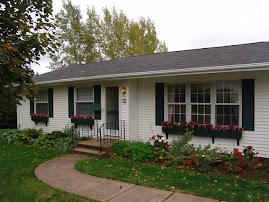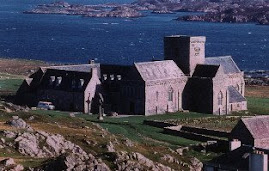











Our final excursion in England was a pilgrimage to Canterbury Cathedral. On Monday morning we set out from London, just like the characters in Chaucer’s Canterbury Tales, but rather than walk we took the train from Victoria Station. The trip was about and hour and a half each way. Oh, and we went through a town called Newington. Once we reached Canterbury we walked from the station, along part of the old wall surrounding the town, then through the town to the cathedral. Canterbury became a major pilgrimage destination when the bones (relics) of Thomas Beckett were enshrined there in 1220, but after Henry VIII destroyed the shrine around 1538 it was not visited as much.
Canterbury is important to us Episcopalians because it is the seat of the leader of the worldwide Anglican Communion, the Archbishop of Canterbury. The current Archbishop is Rowan Williams. We saw the chair in which the archbishops are consecrated since at least 1205. It is called St. Augustine’s chair after the first Archbishop of Canterbury who was sent to England by Pope Gregory the Great in the sixth century. The chair is only used on the day of consecration. After that the archbishop sits in another place when he is in the cathedral presiding at worship. We had a wonderful guide that day, filled with dates and interesting facts and droll British humor. However, the thing that moved me the most was a chapel dedicated to “Saints and Martyrs of Our Own Time,” such as Dietrich Bonheoffer, Jonathan Daniels and a woman who was killed by the Nazis for helping Jews escape from Germany in the 1940s. I was very impressed that someone has taken the time to remember them and write about them so that we might not forget that there are still people who are willing to stand up for what they believe is right and that it can be very dangerous to do so. Back in the day when many people made pilgrimages to Canterbury, it was the custom to crawl up the stairs to Thomas’ shrine. So I crawled up about three steps to see what that was like. It hurt. Those steps are made of stone.
After we left the cathedral and purchased our souvenirs we had a late lunch at the Old Weaver’s Restaurant on the banks of the River Stour in the center of town. As we ate our delicious lunch several boats were poled past and some pulled up to a dock at the restaurant where the passengers got off. We also saw an old dunking stool which was used to punish wives who talked back to their husbands or were accused of witchcraft (if you drowned you were exonerated, if you lived you were guilty). I’m glad we didn’t find out the purpose of the stool until after we had left the restaurant. Upon our return to London we had dinner at Chimes, a nice little pub and restaurant where we had eaten before, and tried to organize ourselves for our flight back to Halifax the next morning. The day was a superb ending to a fabulous trip.



No comments:
Post a Comment